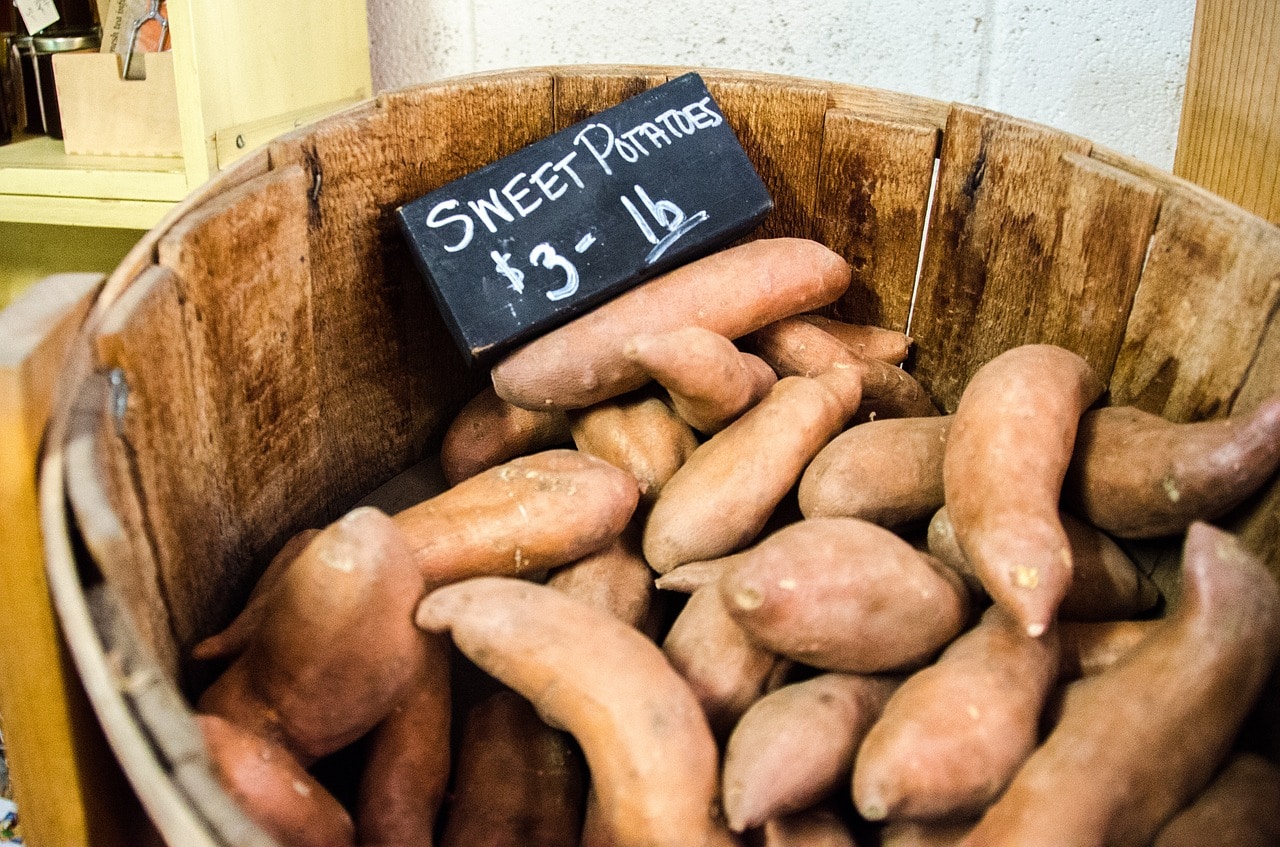Sweet potato storing isn’t rocket science. With some tweaking to your common method, you can store sweet potatoes longer and better. Storing sweet potatoes at home or in a common area with other products can ensure that you will always have staples and other useful vegetables at your disposal at all times. Now, if you find yourself in the presence of a sprouted sweet potato, don’t worry.
Sprouted sweet potatoes are still safe to eat. Just make sure that you use a sharp knife or a potato peeler to remove the sprouts and create just a small cavity each time so you can avoid the glycoalkaloids. Glycoalkaloids are not safe for consumption, but they do hang around the sprouts only.
This is another reason why we remove “eyes” from regular potatoes – regular potatoes also develop these compounds that can be potentially toxic to humans. Don’t worry – you won’t suddenly faint or drop dead from having some glycoalkaloids. However, it is best to steer clear of them.
How Long Can You Store Sweet Potatoes?
The question of how long sweet potatoes can last depends on many factors, including temperature, method of storage, location, humidity, etc. Storing raw sweet potatoes in the refrigerator works, but don’t expect the sweet potatoes to last for very long. The more traditional methods that farmers use can make sweet potatoes last from anywhere to 4 to 6 months. 6 months is the maximum for raw sweet potatoes.
We do not recommend storing both sweet potatoes and potatoes, along with other vegetables. Diffusions from other vegetables can affect the state of sweet potatoes and cause them to spoil faster.
On the same token, sweet potatoes can also cause the faster spoilage of other vegetables in the same space. Onions, in particular, are notorious for making other vegetables sprout more quickly. Onions are known to release chemicals in the air almost continuously. These bulbs should be stored away from other vegetables.
How Do You Store Sweet Potatoes Long Term?
How to store sweet potatoes?
Sweet potatoes can be stored indoors and outdoors. The simplest method of storing sweet potatoes is putting them in paper bags. With careful planning and having a strategy for storing sweet potatoes for the long term, you can keep your sweet potatoes for months.
If you are buying freshly harvested sweet potatoes, you can consume them fresh off the harvest. However, we advise that you first allow your sweet potatoes to cure properly before storing them for the long term. Curing is the name of the process where vegetables are dried before storage. What curing does to sweet potatoes is fascinating.
Curing triggers the formation of sugars in the tubers. What this means is that the flavor that we all love, which can only be described as buttery-sweet, will only intensify as the curing process reaches its peak. Well-cured sweet potatoes can easily last for months in regular storage, and as they age, the sweeter they get.
What is the best way to store sweet potatoes?
If you want your sweet potatoes to be ready for months-long storage, especially during the winter months, you have to dry them properly. The main problems that you will encounter during the damper months of the year are insects and the growth of molds and fungi on the tubers. You can avoid these problems with proper drying and curing. Prepare a place in your yard where you can lay down the tubers carefully. Allow your tubers to dry for at least ten days to up to two weeks.
The ideal spot for curing tubers is a place where the humidity is consistently high, and there’s lots of warmth all day. Try to keep your tubers at a temperate of 80°F (26°C) to a maximum of 85°F(29°C). Obviously, the curing process would be much easier in warmer climes or the tropics. If you live in a temperate zone where 80°F(26°C) is hard to come by, you may want to use growing lights and other implements to reach this ideal temperature.
After curing, we recommend that you sort through your sweet potato stash and remove any sweet potatoes that are damaged or have bruising. In the rare even that some have sprouted, remove these as well. Pack your sweet potatoes in durable paper bags or a box afterward.
All kinds of boxes can be used for storing sweet potatoes. Baskets can also be used. We do not recommend airtight or sealed containers. These should not be used for potatoes and sweet potatoes. A neat trick that you can use to prevent the sprouting of sweet potatoes is adding one large apple to each basket or box. The apple’s natural diffusions will prevent the sweet potatoes from sprouting.
The ideal temperature for indoor storage of sweet potatoes is 55°F(13°C) to a maximum of 60°F(16°C). We do not recommend storing sweet potatoes near heating vents and other sources of heat. A little heat is fine, but if the heat is consistent and fluctuates from low to high, your sweet potatoes may end up becoming ruined.
How Do You Store Sweet Potatoes for The Winter?
For much larger quantities of sweet potatoes, the traditional method of storing sweet potatoes during the winter was called “in-site banking.” Earthen beds with walls would be made, and then a teepee structure would be erected on-site. The teepee would prevent moisture from entering, and the inside of the banking would stay dry, preventing the sweet potatoes from getting moist and freezing. The walls of the banking area are six to ten inches high, and the site would be covered in straw.
Can Sweet Potatoes Be Kept in The Refrigerator?
Cooked sweet potatoes can be refrigerated or frozen. Due to the high viability of sweet potatoes, we rarely have to store them in the refrigerator to increase their shelf life. Also, freezing sweet potatoes can ruin them and cause them to spoil that much quicker.

